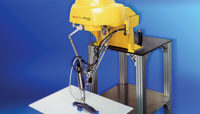An A3 report is an 11 x 17-inch piece of paper that’s outlined into several structured sections. It’s used to standardize and simplify report writing, proposals, status updates and other common methods of communication. The graphic-based content follows the basic logic of the Plan-Do-Check-Act cycle.
Unfortunately, the sudden popularity of A3 reporting has led to numerous mistakes in the engineering community. “A3 reports are often misunderstood and misused,” says Durward Sobek, an associate professor of mechanical and industrial engineering at Montana State University. “Too many people view A3 reports as a documentation tool.
“An A3 is not something that you fill out and file away,” notes Sobek, who recently wrote a book on the subject called Understanding A3 Thinking (Productivity Press). “It’s a working document.”
According to Sobek, another mistake people make is using an A3 report to drive a personal agenda, rather than working collaboratively. “There’s no room for opinions in an A3 report,” he points out. “It should be focused on data and be as objective as possible.
“You also want to avoid narration, long paragraphs and excess verbiage,” explains Sobek. “You won’t win a Pulitzer Prize with an A3 report. Three or four bullet points are acceptable. An A3 should contain lots of information displayed graphically.”
“We tend to rely upon qualitative wordy statements and fall in love with bullet points in the United States for some reason,” laments Art Smalley, president of the Art of Lean Inc. “Those items alone are not acceptable for a good A3 report.
“We are terrible when it comes to effective use of simple charts and visual displays of quantitative information,” adds Smalley, who is the coauthor of Understanding A3 Thinking. “Edward Tufte, professor emeritus of political science, statistics and computer science at Yale University, makes a lot of great points about this in his writings, which have nothing to do with Toyota or A3 reports, but his insights are spot on.” Tufte’s books include Envisioning Information and The Visual Display of Quantitative Information (Graphics Press).
Jamie Flinchbaugh, a partner in Lean Learning Center and author of ASSEMBLY’s “Leading Lean” column, claims there are three big mistakes that lean managers make with A3 reports:
- The most common mistake is treating the A3 as a form, instead of a process. “The form has no magic in it,” says Flinchbaugh. “When we focus on the template, we solve problems the same way we always have, and then try to fill out the form after the fact. Not only does this not improve our problem-solving capabilities, but it actually creates waste.”
- The second mistake is using the A3 process linearly, going from A to B. “Do it in pencil, both literally and figuratively,” urges Flinchbaugh. “Be willing to redo your work. As you go forward in your process, you should be learning, which means you should be going back to modify [the A3 report] based on your learnings.”
- A3 report writing is often much better as a collaborative process than a solo one. “Engage people, get input, develop high agreement and move forward as a team,” concludes Flinchbaugh.


